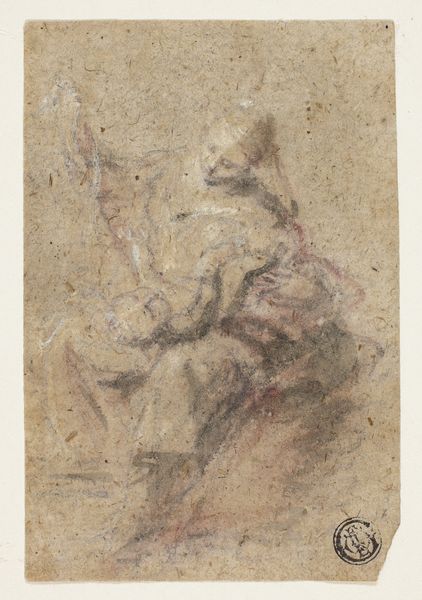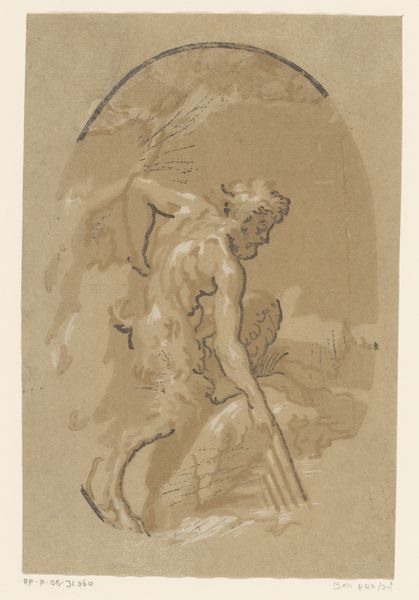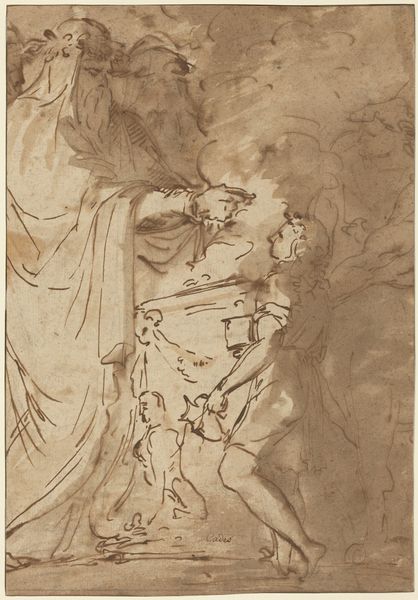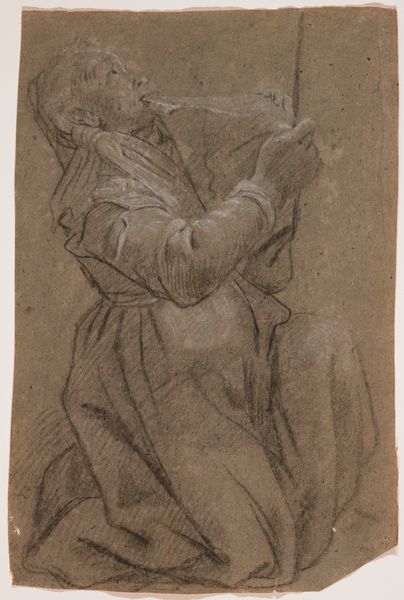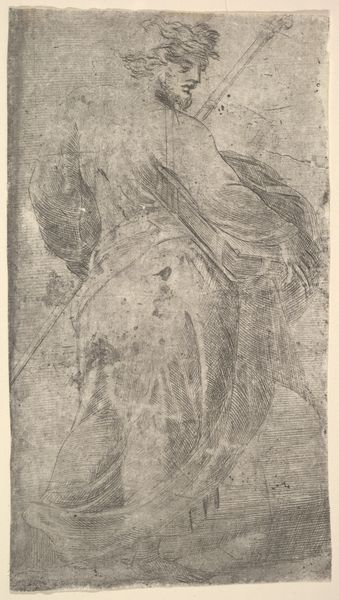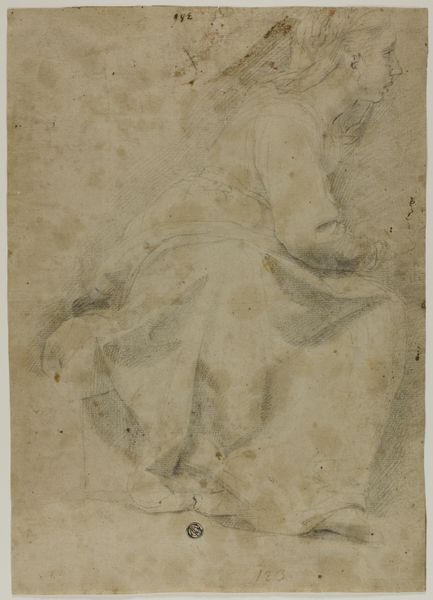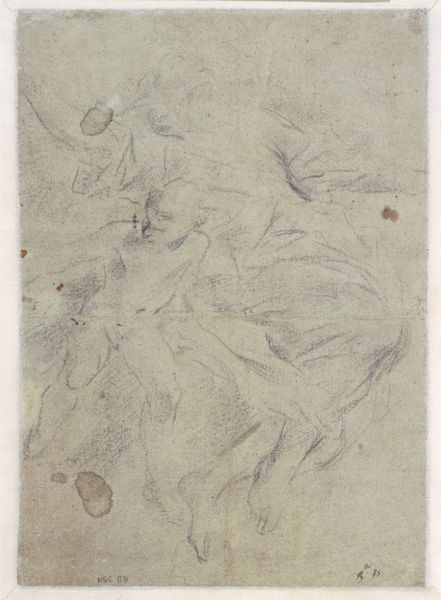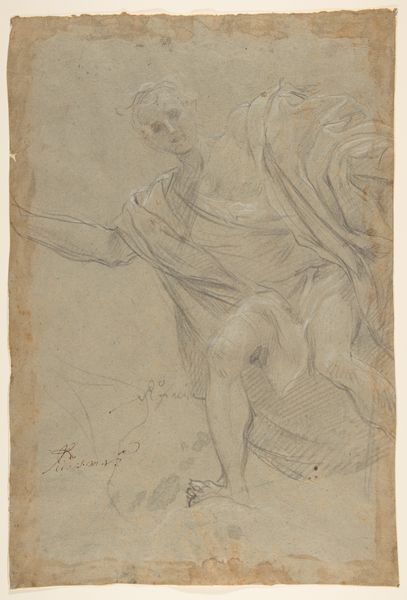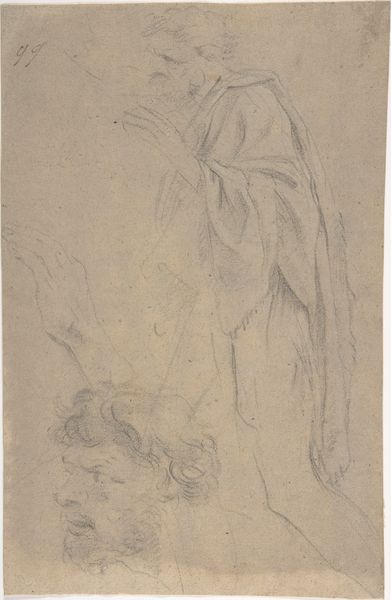
The Vision of Saint William of Aquitaine 1655 - 1659
0:00
0:00
drawing, pencil, pen
#
drawing
#
baroque
#
figuration
#
pencil drawing
#
pencil
#
pen
#
history-painting
Dimensions: sheet: 18 11/16 x 13 9/16 in. (47.5 x 34.5 cm)
Copyright: Public Domain
Curator: Immediately, I'm struck by the dynamic pose, that yearning upward gaze...it feels less like witnessing history and more like being inside a private moment of transcendence. Editor: This is Giovanni Angelo Canini's pen and pencil drawing, "The Vision of Saint William of Aquitaine," dating from the late 1650s and held at the Met. Brown paper provides the ground for delicate hatching and bold tonal contrasts. Curator: I wonder, what led Canini to depict this particular moment? I'm drawn to the emotional weight of the figure. He seems suspended between worlds, doesn't he? Almost yearning. Editor: Saint William had quite a journey, trading dukedom duties for monastic ones. We see how those luxurious materials that would have symbolized rank–paper, ink, metalpoint—serve instead in the staging of a retreat from worldly display. Curator: Yes, I get a feeling of both struggle and serenity from those rapidly sketched figures. There is a tension between earthbound weight and that floating vision. It seems he wants us to ponder what sacrifice truly entails. Editor: Look closely, and you notice the relatively modest expense on view–brown paper wasn’t treasured canvas. It suggests a kind of Baroque ‘humbleness’ and speaks to the economies involved in visualizing these stories. It feels rather down to earth despite the subject. Curator: I love how the soft lines of the angels contrast with the rough texture depicting William’s rocky surroundings, this immediate impression pulls you from heaven back to Earth. The materiality reflects and refracts back his transformation in faith. It shows the duality that William faced at that time. Editor: Canini's "Vision" reveals the layered transactions within art history: not just spiritual or aesthetic transcendence, but the evidence of real work, real materials employed to convey, perhaps even to fabricate that very sensation. Curator: Thinking about William of Aquitaine now, maybe his real vision wasn’t celestial, but internal, like this very material vision is in us too. Editor: Indeed. We begin with an artwork's shimmering surface, and yet we leave asking, "What does it actually take to arrive at an idea of transcendence?"
Comments
No comments
Be the first to comment and join the conversation on the ultimate creative platform.
